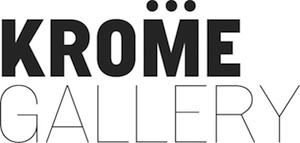•
ANNIKA ERIKSSON
THE GREAT GOOD PLACE
28.04. - 09.06.2012
Opening: 27.04.2012, 6-9 pm
•
click the picture to launch gallery
•
“The Great Good Place” by Swedish artist Annika Eriksson brings together a number of video scenarios filmed in Istanbul in 2010, presented in a specifically conceived structure. The videos portray a ‘community’ of stray cats and their life in an inner city park of Istanbul. “The Great Good Place” is composed of a series of viewpoints, each showing different scenes in the daily life of these formerly well cared for domesticated cats contrasted by a video projection featuring their intimate or secret life in the park after nightfall. The notion of place in the title hints at the gaps in the cityscape, gaps that allow alternative pockets of existence and experience to take place.
Over the last two decades, Annika Eriksson has developed a body of work where a critique towards the apparitions of commodity take multiple forms and expressions; mainly through portraying situations that witness the unavoidable presence of institutional and economical powers and class structures. These ‘great good places’ are also the sites where relations are surrounded by conflict and ideology, and it is these public secrets typical of our Neo-liberal age that is exuded in her work.
A returning feature of Eriksson’s work is the staging and the choreographing of people, somehow both performative and documentary, adding to the image a quality halfway between fiction and reality. Besides this, there is a recent emphasis on time. The trilogy of works, encompassing “Wir sind wieder da” (2010), “Wir bleiben/The Last Tenants” (2011) and “It did happen soon” (2012), features a ghostly capitalism at work in the configuration of our collective memory where the past, the present and a possible future overlap. In “Wir sind wieder da” (We’re back) a group of punks hangs out in an park; they look remnants of another era but they live in our days. At a sudden point in the narrative, the video closes with a black and white fragment extending us into a historical fog: a scene of a train that does not stop at stations (something that reminds us that certain trains in the former division of Berlin, when trains were instructed not to stop at certain stations). The punk logo ‘No future’ is punctuated by a cyberpunk touch and then the loop starts again.
In “It did happen soon”, the artist investigates the legend of Kommune 1 (one of the first political communities in Germany) fictionalizing a young man speaking in first person about a past that seems to be blurred. Looking at the film we are perhaps back to the 60’s, or perhaps the young man is looking at something that has not yet happened. Resistance and passivity, facts and dreams, past and future. They all are ‘ghosts’ locked in time/space frames, or trapped in loops, and they are also the dwellers of our cities.
Eriksson's projects conjure up the question of whether art, within Late Capitalism, can become a cultural form on the rise, a form that can generate a cognitive estrangement as a critical position within a post-fordist anxiety of overproduction. It is a process of distortion, one that art also can achieve from science fiction as a genre that allegorizes our present. Eriksson’s work revitalizes the pair of art and politics but it does so from a new perspective; using the directness of an aesthetic of realism plus the magical aspects hidden in reality. Even if any theory that attempts to depict our world system is a ‘capitalist realism’ (as defined by Mark Fisher) this cannot only be sustained by old representations of an aesthetic of realism (or old forms of resistance, including political art) but rather need the component of a Brechtian estrangement that is often housed in science fiction. In the artist, this commitment is marked by an estrangement as the result of a dislocation or context switch that most of the occasions reveals the uncanny in the normality of the everyday.
Peio Aguirre

